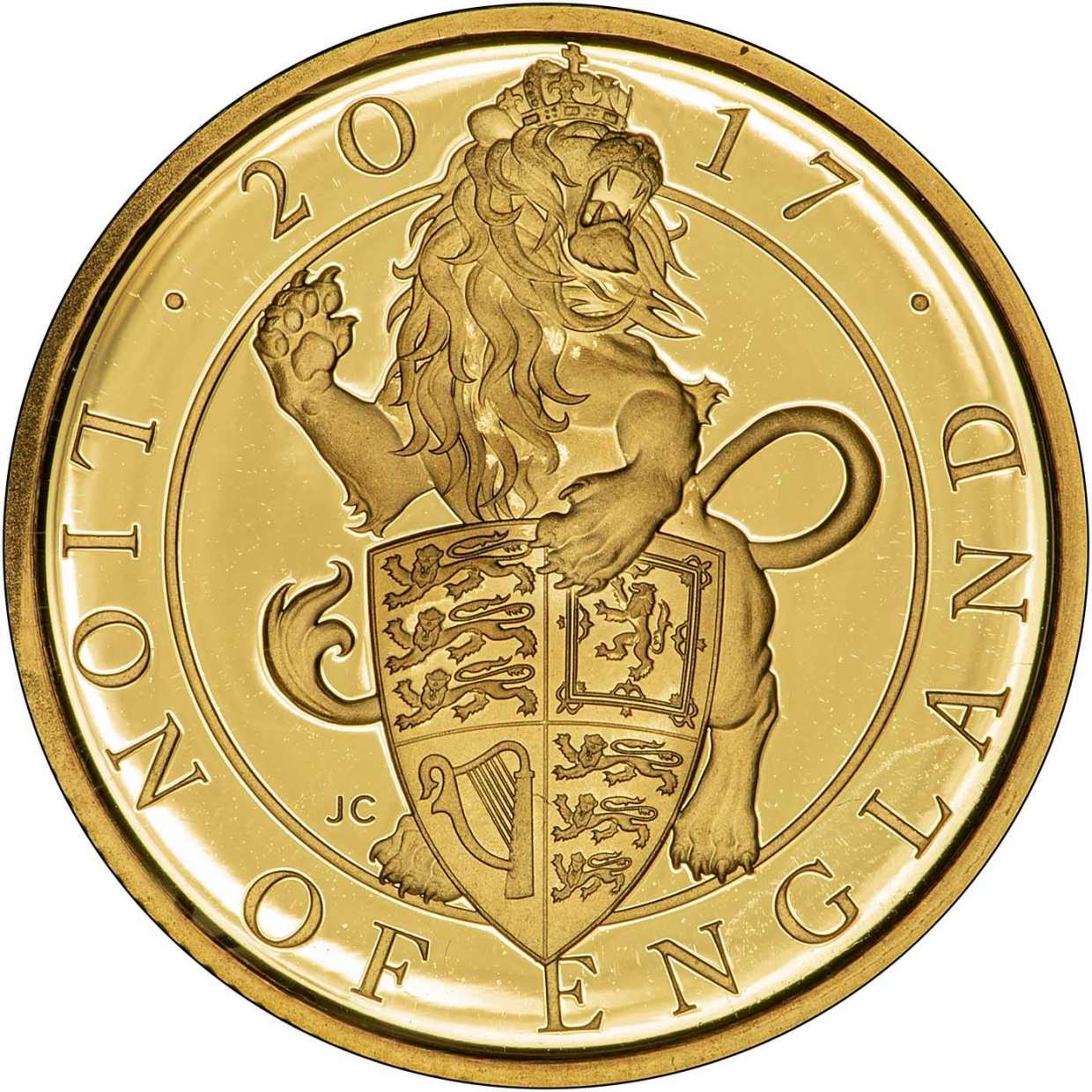The Queen's Beasts
Synopsis
The Queen’s Beasts range not only celebrates the heraldry of the Queen and her ancestors but also adds welcome variety to the bullion market. The series includes fine gold coins, fine silver coins, and is the first Royal Mint bullion coin to be issued in platinum. Each beast is available in a range of metals and weights.
The Original Queen's Beasts
Based on the ten wondrous creatures that stood guard over Her Majesty at her coronation, the range began in 2016 and isn’t finished yet! When we say stood guard, we do not mean it figuratively. Six-foot, plaster sculptures were created for the coronation by prominent sculptor James Woodford. They stood outside the annexe that was erected outside Westminster Abbey for the event. After the ceremony, they were taken to Hampton Court Palace to be displayed with the King’s Beasts of Henry VIII, which had inspired them.
Later, in 1957, the Queen's Beasts were moved to St George’s Hall in Windsor Castle for a short time. Finally, it was decided that they would be gifted to one of the Commonwealth governments and Canada was selected. So, the original beasts now stand in the Canadian Museum of History in Quebec as they have since 1959.
Each beast represents a different royal ancestor of the Queen’s, and together they represent the strength of her royal lineage and claim to the throne. Here, we will take you through the coins in the collection and explore the history and symbolism of each.
To learn more about one of the designs, it's varieties and the beast it bears, select a link below.
The Lion of England
England's heraldry has been littered with lions since Richard I was dubbed 'lionheart'. In this blog, we look into why this regal beast has long been known as the 'King of the Jungle', and why it was chosen as England's national animal.
The Unicorn of Scotland
Nowadays the unicorn maybe linked more with sparkles and princess parties than strength and kings. However, with its dignity and grace as well as its healing magic, it is clear to see why the proud folk of Scotland are well represented by their national animal.
The Red Dragon of Wales
Dating back to the wars of the Britons and Anglo-Saxons, the Red Dragon of Wales is not only a symbol of power and wisdom, but also a symbol of the passion that the Welsh people still feel for their nation.
The Black Bull of Clarence
The symbol of a true bull of a man, the Black Bull of Clarence was inspired by and named for Lionel of Antwerp, 1st Duke of Clarence. He was the seven foot tall son of English King Edward III. Although he never reigned England himself, his 3rd great grandson Edward IV of the House of York based his claim to the throne on being the decendent of Lionel. In honour of this, his soldiers bore the Black Bull on their shields as they charged into battle during the Wars of the Roses, and it was sometimes used as a supporter of the royal coat of arms.
The Falcon of the Plantagenets
The falcon was orginally adopted by Edward III because he loved the sport of Falconry. However, the symbolism of the falcon reveals that it is a much more suitable emblem for a king than we might first think!
The Yale of Beaufort
One of the lesser known mythical creatures in the Beasts lineup, not many people have heard the Yale. Originating in the writings of Pliny the Elder, the creature was first described as being black and brown but the Beaufort Yale is its regal upgrade with a coat of silver and golden spots.
The White Lion of Mortimer
In comparision to the Lion of England, which mostly stands rampant (on its hind legs with forelimbs raised), the White Lion of Mortimer is usually pictured in a more restrained, conservative, seated pose. If you want to know why, read on!
The White Horse of Hanover
The White Horse of Hanover became part of British Royal Heraldry when George I became monarch of both England and Hanover. Th White Horse is thought to decend fron the Saxon Steed that has a long history in the region.
The White Greyhound of Richmond
The greyhound has long been popular with aristocratic households as for a while they were bred specifically for the nobility. At one point, there was even a law preventing commoners from owning greyhounds. The White Greyhound of Richmond would be particularly prized as the nobility would breed their greyhounds to be white or spotted, so they would stand out and be easily found on a hunt.
The Griffin of Edward III
The griffin is a mythical creature with the body, tail, and back legs of a lion. Its front half consists of the head, wings and talons of an eagle. As an amalgamation of these two creatures the griffin is an especially formidable and majestic creature.
Related Blog Articles
This guide and its content is copyright of Chard (1964) Ltd - © Chard (1964) Ltd 2024. All rights reserved. Any redistribution or reproduction of part or all of the contents in any form is prohibited.
We are not financial advisers and we would always recommend that you consult with one prior to making any investment decision.
You can read more about copyright or our advice disclaimer on these links.













